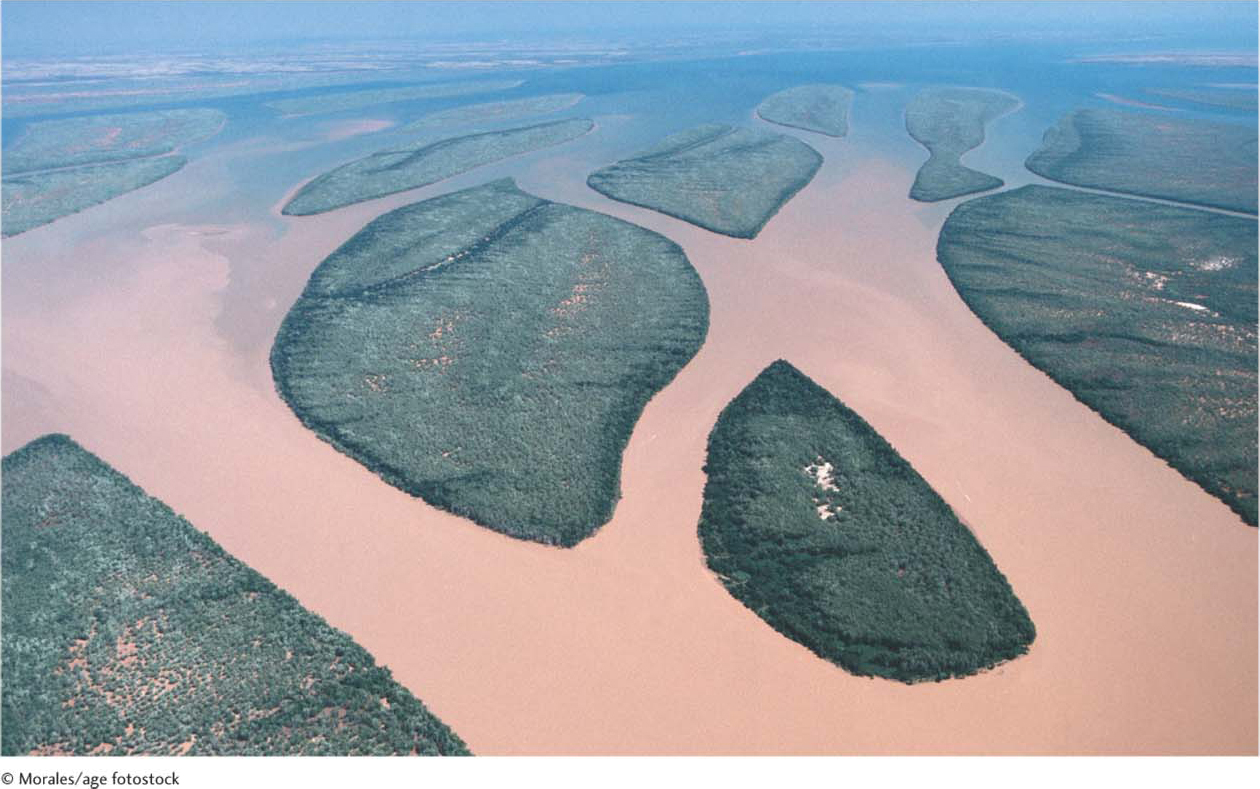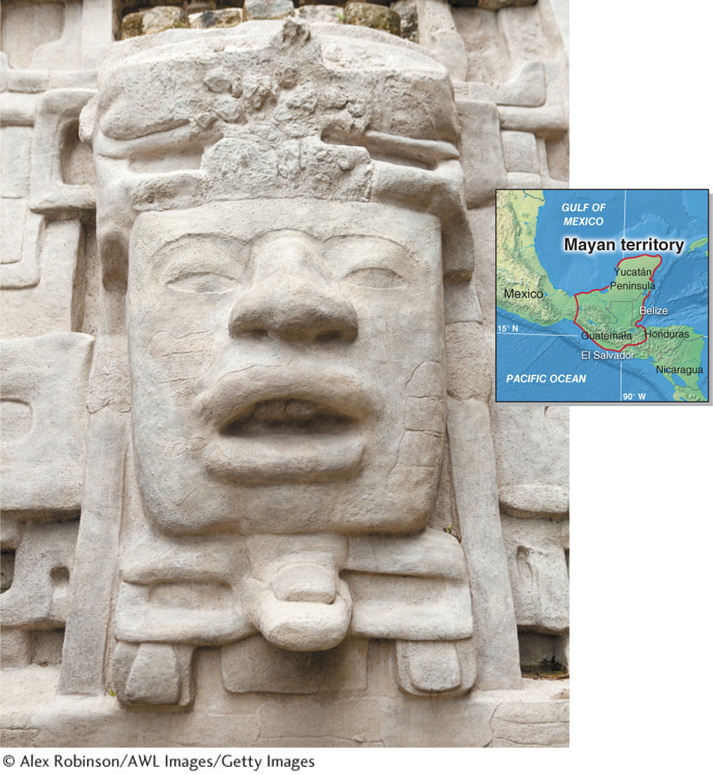Soil and Water Resources
9

LIVING PHYSICAL GEOGRAPHY
What is the difference between dirt and soil?
How long does it take for soils to form?
Why does water in houses gush from the faucets?
How much water is needed to produce 1 kg (2.2 lb) of beef?
THE BIG PICTURE
Many factors determine soil characteristics, including climate and bedrock. Porous rocks and sediments hold water in the ground. Soils and groundwater are both essential resources for people.
LEARNING GOALS
After reading this chapter, you will be able to:
9.1
Describe how soils form and erode, and explain why soils are important to people.
9.2
Explain different features of aquifers and how water moves through the ground.
9.3
Describe problems with groundwater that result from human activities.
9.4
Assess the importance of water resources to human societies.
THE HUMAN SPHERE:
The Collapse of the Maya
THE COLLAPSE of the powerful Maya civilization is a reminder of the importance of soil and water resources to human societies. Maya society stretched from Mexico’s Yucatán Peninsula as far south as Honduras and El Salvador (Figure 9.1). Altogether, they inhabited the region for some 3,100 years, between approximately 2000 bc and 1100 ce. The Maya had one of the most technologically advanced and successful preindustrial civilizations in the world. But over a brief 80-

There have been many hypotheses attempting to explain what caused the demise of the Maya. Wasted natural resources, as a result of perpetual warfare between neighboring Mayan cities, and environmental change are most often cited. In 2012, a study published in the journal Science provided new insight. It definitively established that Mayan populations grew as the climate became wetter and shrank in times of drought. This finding suggests that water resources played a key role in the demise of the Maya.
The region in which the Maya lived is composed mostly of limestone bedrock. Water dissolves limestone, creating underground stream systems. As a result, there were few surface streams and little available surface water for the Maya. A series of droughts between 1020 and 1100 ce brought great hardship for them. Furthermore, the tropical soils of the Mayan region are low in fertility. Scientists think that drought and the resulting reduction of plant cover probably further reduced the fertility of these soils. A lack of soil and water resources, therefore, probably played a pivotal role in the disappearance of the Maya.
In this chapter, we examine soil and water resources in the context of their importance to modern societies. We first look at soil formation and soils as a natural resource for people. We then explore how water enters and moves through the ground. Finally, we examine water’s role as a natural resource.